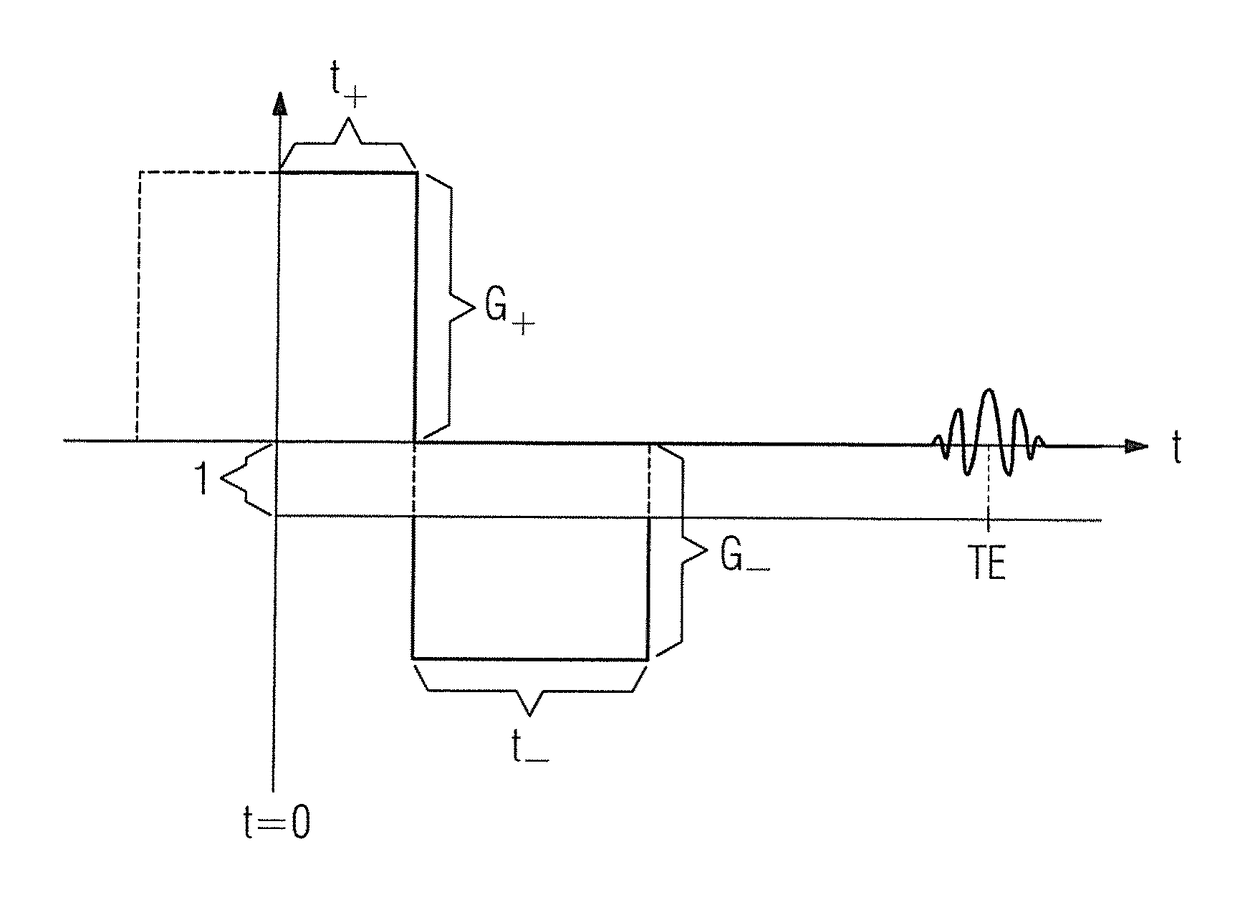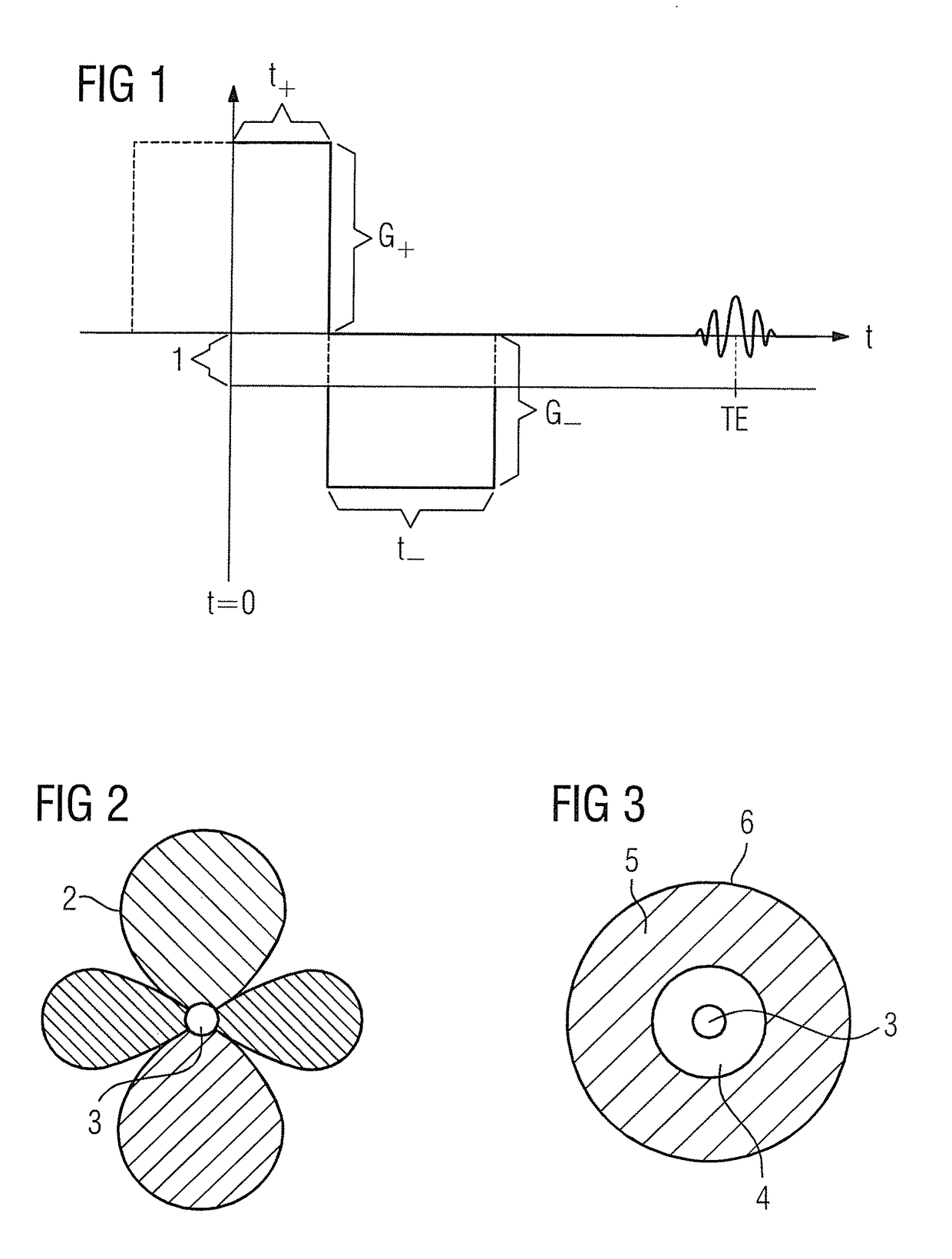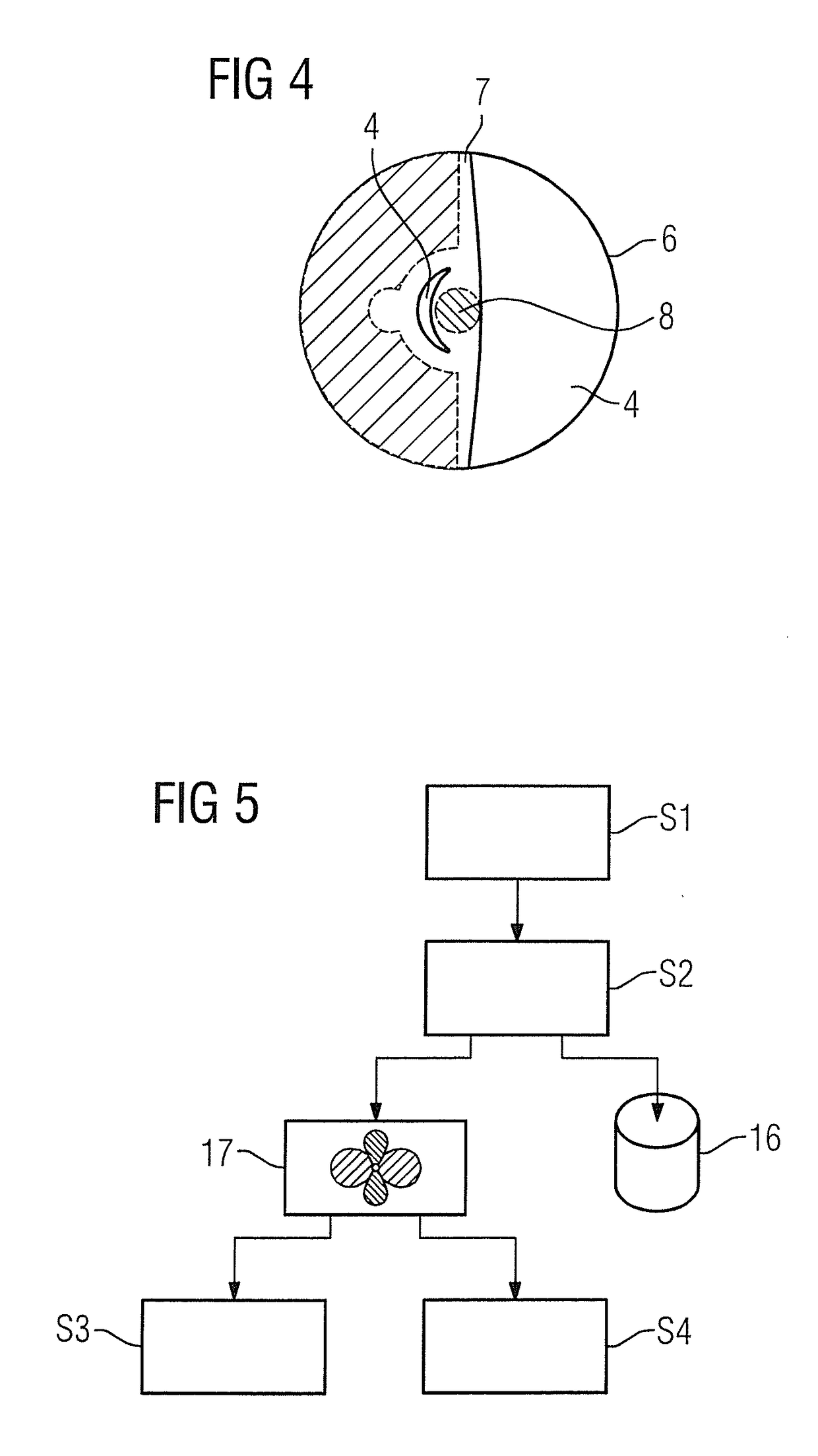Method and apparatus for recording a magnetic resonance data set
a magnetic resonance and data set technology, applied in the field of methods and apparatus for recording magnetic resonance data sets, can solve problems such as problems such as artifacts in magnetic resonance images, susceptibility differences in target regions, and problems such as problems, to achieve the effect of reducing or preventing dephasing-induced signal loss
- Summary
- Abstract
- Description
- Claims
- Application Information
AI Technical Summary
Benefits of technology
Problems solved by technology
Method used
Image
Examples
Embodiment Construction
[0037]The basis of the present invention is to sample a further degree of freedom during the recording of magnetic resonance data, namely the dephasing. This enables spins that are subjected to a specific interference field or interference field gradient, which in turn brings about dephasing, nevertheless to make a contribution to the image. This principle is explained in more detail by the simple example in the article by Seppenwoolde et al. mentioned in the introduction, although this is not applicable to general magnetic resonance imaging. This is an attempt to depict the dephasing in the environment of a magnetic marker that causes interference of the B0 fields as lighter than the surrounding unperturbed tissue. In a conventional measurement with a GRE sequence, the magnetic resonance signal in the region of the interference would appear darker than the unperturbed tissue since the interference field Δ B(x,y,z) causes it to experience an additional phase, that is to say dephasin...
PUM
 Login to View More
Login to View More Abstract
Description
Claims
Application Information
 Login to View More
Login to View More - R&D
- Intellectual Property
- Life Sciences
- Materials
- Tech Scout
- Unparalleled Data Quality
- Higher Quality Content
- 60% Fewer Hallucinations
Browse by: Latest US Patents, China's latest patents, Technical Efficacy Thesaurus, Application Domain, Technology Topic, Popular Technical Reports.
© 2025 PatSnap. All rights reserved.Legal|Privacy policy|Modern Slavery Act Transparency Statement|Sitemap|About US| Contact US: help@patsnap.com



